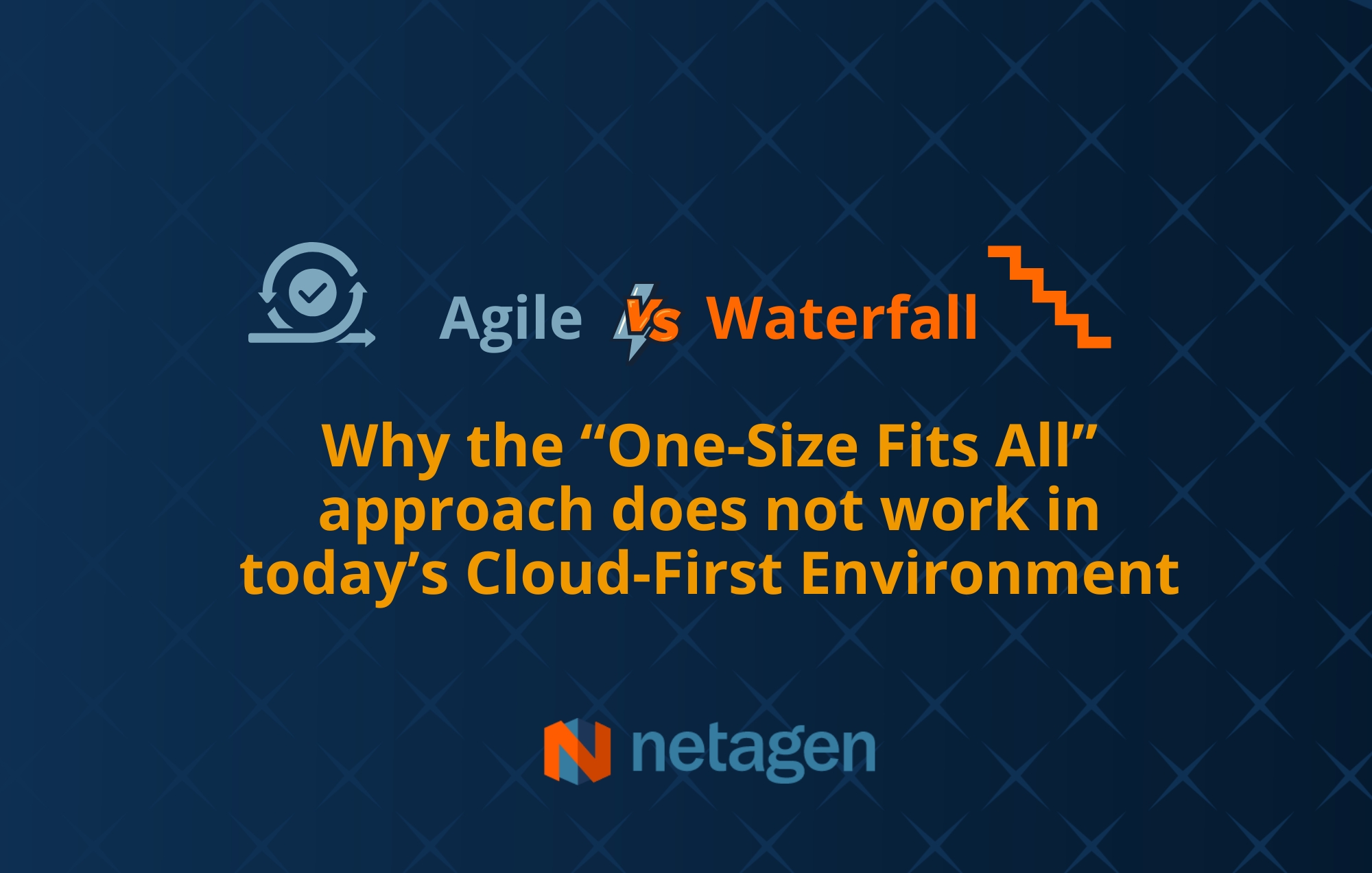Agile vs Waterfall – Why the “One-Size Fits All” approach does not work in today’s Cloud-First Environment

Agile vs Waterfall: The Difference
Agile and Waterfall are two different approaches to project management.
Agile is a methodology that emphasizes flexibility and the ability to adapt to change. It focuses on delivering small, incremental pieces of the project in short cycles called sprints. Agile methodologies like Scrum, Kanban, and XP are commonly used in software development.
Waterfall is a more rigid method that follows a linear progression of phases. It is based on a sequential approach, where each phase must be completed before the next one can begin. Waterfall is best suited for projects with well-defined requirements and little room for change, and it is commonly used in construction and manufacturing.
When it comes to managing cloud environment projects and platforms, utilizing a combination of both, referred to as a Hybrid methodology is the best approach.
Hybrid is a combination of Agile and Waterfall methodologies, where the best practices of both methodologies are used to deliver a project. It allows for more flexibility in the development process while still maintaining structure and oversight. It's most commonly used in projects that have a mix of both well-defined and changing requirements.
The Cons of Utilizing One Approach Over the Other
While the Agile methodology can be well-suited for cloud environment projects, there are a few cons to consider, such as lack of upfront planning (flexibility and adaptability are prioritized over upfront planning), difficulty in estimating costs (this principle is based on delivering small, incremental pieces of the project in short cycles which can make it difficult to estimate costs for the entire project), and the dependence on a team’s discipline (Agile methodologies rely heavily on a team’s discipline to follow the Agile principles and practices, therefore teams that are not properly trained or motivated may not be able to effectively implement the methodology and this can lead to project failure.
Waterfall, on the other hand, is not as well-suited for cloud environment projects because it is a more rigid method that follows a linear progression of phases. It may not be able to adapt to the constantly changing nature of cloud environments. Additionally, Waterfall is based on a sequential approach, where each phase must be completed before the next one can begin, which does not align with the iterative and incremental nature of cloud development.
A Project Manager Perspective
“Utilizing both Waterfall and Agile methodologies offers us the opportunity to fine-tune our tasks and timelines as well as reduce project risk.”
~ Lovisa Owen
Many project managers such as Lovisa Owen, MBA, PMP, ITIL, Senior Project Manager, Netagen, prefer the Agile-Waterfall Hybrid method because it is considered an appropriate approach, as it adopts both methodologies without compromising too much. This allows organizations to take advantage of the strengths of each methodology while mitigating their shortfalls; essentially utilizing the best of both worlds.
Whatever methodology is chosen, there will always be unknown risks, but the Hybrid method is, without doubt, a low-risk project management approach, and as Lovisa pointed out, utilizing both methodologies helps to keep our schedules tight yet flexible. Further, many project plans already consist of an Agile-Waterfall Hybrid approach. For example, an Agile method can be utilized on an enterprise level while using the Waterfall method for requirements, design, and implementation and/or an Agile approach can be utilized at a project level but use Waterfall at the organization level.
The Bottom Line
The Hybrid methodology is not a one-size-fits-all solution, and organizations should carefully consider the specific requirements of their cloud environment projects before deciding which methodology to use. Still, when it comes to managing dependencies in a cloud environment, Hybrid continues to be the best alternative.
This model ensures that projects are delivered on time and within budget. This is important in any project plan but particularly in a cloud environment where new technologies and services are being implemented and constantly changing and it's important to maintain structure and oversight while still providing flexibility.
If you’re curious to learn more about Waterfall, Agile, and Waterfall-Agile hybrid principles, contact us.
.jpg)
